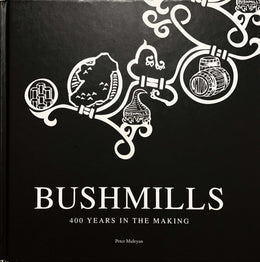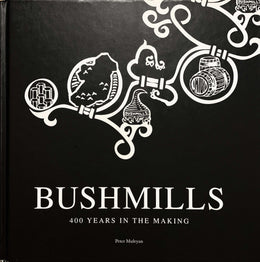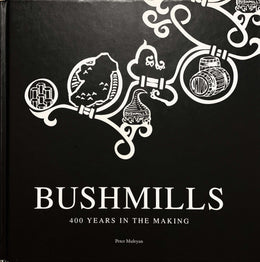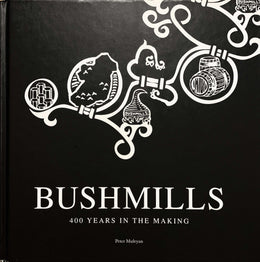
Detail of the Electric Railway passing Dunlucc Castle on the north Antrim coast
When Old Bushmills finally hit the headlines, it was for all the wrong reasons. On 25th November 1885, about 11pm, disaster struck when fire took hold of the distillery and gutted the building. The Coleraine Chronicle reported:
"...two years ago the building was refitted with all the necessary improvements, and it was only within the last fortnight that the latest invention was introduced —namely, the electric light."
The article went on to say that the manager Mr Andrews managed to save the light...but not much else.
The place, with the exception of the grain store, is entirely gutted, and nothing remains but the bare walls and the charred burned wood of the other appliances."

Within three years of this disaster an illustration published in George Henry Bassett's The Book of Antrim, shows the entire distillery had been re-built. "In fact," writes the author, "there is nothing old about the place except the whiskey." Whatever the cause of the fire in 1885, it does not seem to have been the newly installed electrics, because we are told: "To guard against another burning, electricity is used for lighting purposes in every department." Most importantly, the fire doesn't seem to have impacted on that North Antrim resilience, as in 1886 the distillery took home another Gold Medal, this time from the Exposition d'Alimentation et d'Economie Domestique in Paris. Given the events of November 1885, this was quite an achievement.
In 1887 Harper's Weekly Gazette first published, in serial form, a collection of essays that would eventually be published as The Whisky Distilleries of the United Kingdom. The author was Alfred Barnard, and it is thanks to him that we finally get picture of the industry in its Victorian prime. Barnard visited 129 Scottish, 28 Irish and 4 English whiskey distilleries. He evidently enjoyed himself so much that a couple of years later he took it upon himself to compile The Noted Breweries of Great Britain and Ireland, which runs to four volumes. A tough job I guess, but someone had to do it.
Here is his account of the journey into Bushmills town:
"We stayed over Sunday at Portrush, and on Monday morning started for Bushman by the celebrated Electric Railway, which for nearly six miles climbs the hills and rocks overhanging the sea; after crossing the River Bush, we found ourselves at the old-fashioned town of Bushmills and within a few minutes' walk of the Distillery. This very old work is about two miles from the Giant's Causeway, which attracts a large number of tourists during the season, from all parts of the world. The Bush, from which the town takes its name, is a fine salmon river, and one of its tributaries ,a clear and beautiful stream, called 'Saint Columb's passes through the Distinct', being used by the proprietor sin the manufacture of their celebrated whiskey."
One of the problems with Barnard's account of his visit to Bushmills is that we are unsure when it happened. He doesn't refer to the tire at the distillery, so it is pretty safe to assume that he visited at an earlier date. He writes: "...the company have recently increased the capacity of their old pot stills". This is not something you would do if the stills had just been replaced.
Barnard does not mention what kind of whiskey is made here, but he does give this detail for the Glen Distillery in Cork. At the time it was the only distillery in Ireland making all malt whiskey in the Scottish style. No doubt the proprietors of the Glen Distillery had spotted a gap in the market, a market that subsequently Bushmills moved into with stunning success.
The whiskey made at the North Antrim distillery at that time would have been pot-still whiskey, made from a mix of both malted and unmalted barley. This style of whiskey is unique to Ireland. Scotland had its single malt, Ireland its pot-still whiskey, but by the end of the 19th century the style was falling out of favour. The pot-still whiskey of the time was rich, oily and unctuous; the public wanted lighter whiskey, and blended Scotch was filling that market. The big Irish distilleries resisted change: they were in line, everyone else was out of step. That arrogance cost them dearly, but at Old Bushmills it seems that change wasn't feared.

This bottle of Old Bushmills Pure Malt whiskey was dis
tilled in 1882, just a few years before Alfred Barnard's visit. It is the oldest sample of Bushmills whiskey surviving today.
Written by Peter Mulryan
The text is an excerpt from "Bushmills: 400 Years in the Making" (pp. 43 - 45), written by Peter Mulryan, published 2008 by Appletree Press Ltd.







